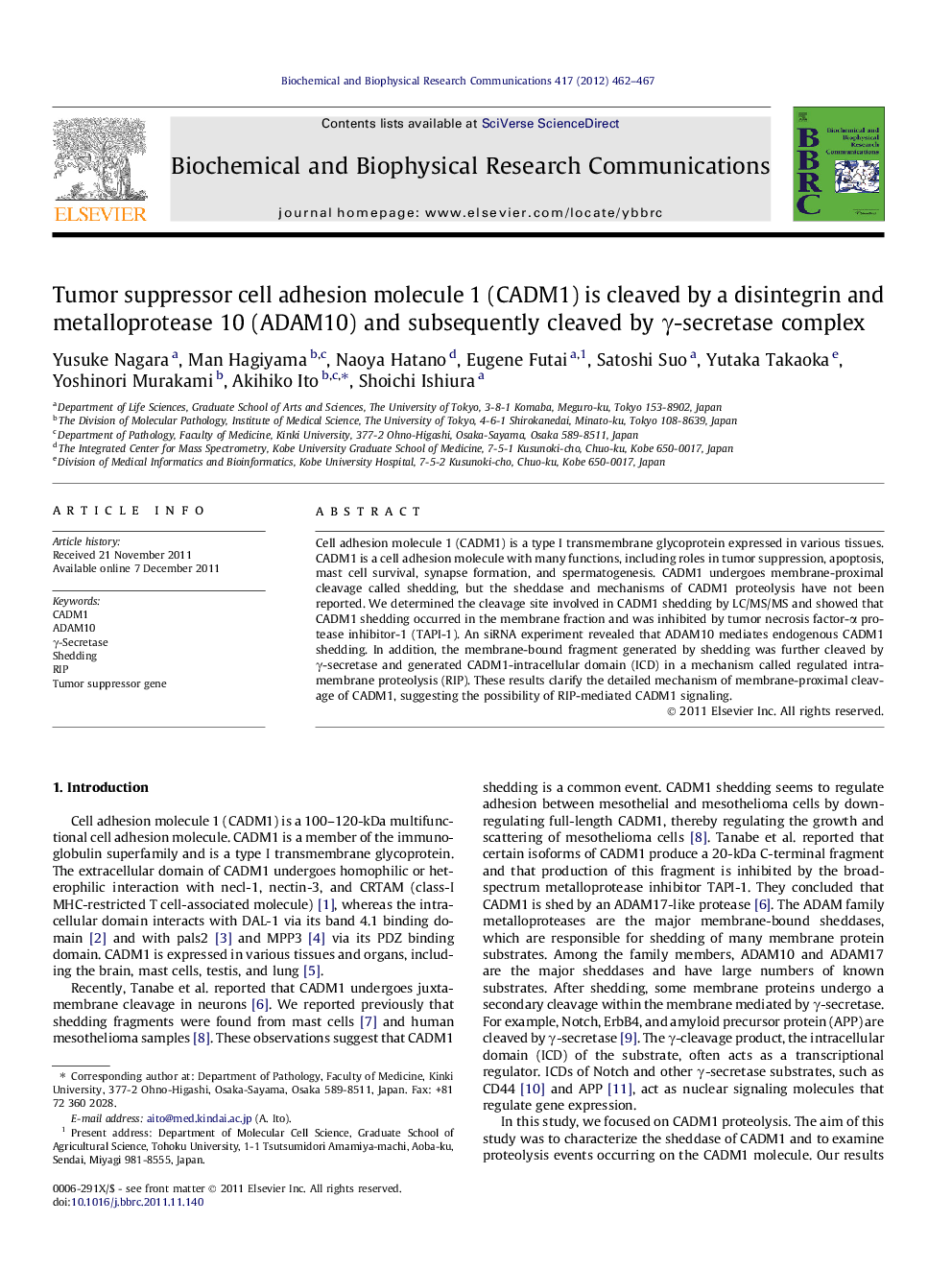| Article ID | Journal | Published Year | Pages | File Type |
|---|---|---|---|---|
| 1930145 | Biochemical and Biophysical Research Communications | 2012 | 6 Pages |
Cell adhesion molecule 1 (CADM1) is a type I transmembrane glycoprotein expressed in various tissues. CADM1 is a cell adhesion molecule with many functions, including roles in tumor suppression, apoptosis, mast cell survival, synapse formation, and spermatogenesis. CADM1 undergoes membrane-proximal cleavage called shedding, but the sheddase and mechanisms of CADM1 proteolysis have not been reported. We determined the cleavage site involved in CADM1 shedding by LC/MS/MS and showed that CADM1 shedding occurred in the membrane fraction and was inhibited by tumor necrosis factor-α protease inhibitor-1 (TAPI-1). An siRNA experiment revealed that ADAM10 mediates endogenous CADM1 shedding. In addition, the membrane-bound fragment generated by shedding was further cleaved by γ-secretase and generated CADM1-intracellular domain (ICD) in a mechanism called regulated intramembrane proteolysis (RIP). These results clarify the detailed mechanism of membrane-proximal cleavage of CADM1, suggesting the possibility of RIP-mediated CADM1 signaling.
Graphical abstractFigure optionsDownload full-size imageDownload as PowerPoint slideHighlights► CADM1 is cleaved into alphaCTF by a membrane-associated metalloprotease. ► The cleavage site is nine amino acids from the transmembrane region. ► Production of alphaCTF is mediated by ADAM10. ► AlphaCTF is subsequently cleaved by γ-secretase, generating CADM1-ICD.
